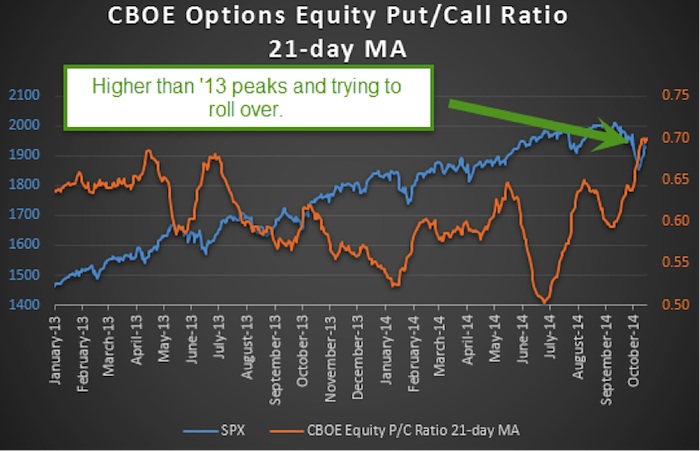Return on Equity ROE vs Return on Assets ROA: What’s the Difference?
The key to value investing is developing a knack for spotting undervalued companies. The value investor is looking for hidden gems — companies with solid management, good financial performance, and relatively low stock price. For investors, ROA can be used in conjunction with other metrics to gain insight into a company’s efficiency.

Each one tells you something a bit different, but in our view,ROIC is the most useful all-around metric because it reflectsall the investors in the company – not just the equity investors . Metrics such as ROE, ROA, and ROIC let you evaluate and compare different companies and see why one company might be worth more and trade at higher valuation multiples than others. Return on equity’s concern much more on the capital or financial management. However, Return on Asset deals much more on operating management.
Return on Equity can be used for:
A more sophisticated ROA calculation takes into account that the value of a company’s assets changes over time. To factor this into your calculation, use the average value of assets the company owned in a given year, rather than the total value of its assets at year end. While calculating ROE, the net income is the numerator, whereas the total roa vs roe equity is the denominator. In a calculation of ROA, net income is the numerator, and the total assets are the denominator. Return on equity measures how much a business earns concerning the amount of equity put in the business. Return on equity is a ratio calculated with net income as the numerator and total equity as the denominator.
Ed’s balance sheet should reveal why the company’s return on equity and return on assets were so different. The carpet-maker carried an enormous amount of debt, which kept its assets high while reducing the proportional amount of shareholders’ equity. In 2019, it had total liabilities that exceeded $422 billion—more than 16 times its total shareholders’ equity of $25.268 billion.
Thus, ROE is calculated by multiplying ROA by the equity multiplier. Return on equity measures a corporation’s profitability in relation to stockholders’ equity. Please see Open to the Public Investing’s Fee Schedule to learn more. Additional information about your broker can be found by clicking here. Open to Public Investing is a wholly-owned subsidiary of Public Holdings, Inc. (“Public Holdings”).

“Two firms can have the same ROE and get there in completely different ways,” says Johnson. HBR Learning’s online leadership training helps you hone your skills with courses like Finance Essentials. Here’s an example, similar to the one above, where your profit for the year is $248 and your equity is $2,457.
Recommended Articles
Diane Costagliola is a researcher, librarian, instructor, and writer who has published articles on personal finance, home buying, and foreclosure. In order to participate, a user must comply with all eligibility requirements and make a qualifying purchase with their Stock-Back® Card. All funds used for this Program will be taken from your Stash Banking account†. A high ROE could be an indicator of a strong investment but the numbers could also be propped up by debt that could come back to haunt you in the future. The company’s ROA can be affected by either an increase or decrease in spending or earnings. Expenses and earnings – expenses are how much the company spends, while earnings are how much money the company retains.
While Return on assets is the amount of profit earns from the assets or resources. Due to the inclusion of liabilities, ROA is a valuable internal management ratio to evaluate the benefits of investing in a new system versus expanding the current operations. A good ROA will show an increase in productivity/income and cost optimization. When you divide the company’s net profit of $2,500,000 by $33,500,000, you get a ROA of 7.46%.
In addition, the asset base isn’t a projection of a company’s future, as it can change depending on market conditions and the buying and selling of assets. The ROA equation is used to determine how effectively a company utilizes its assets in producing profits, which assists investors in analyzing a business’s finances. A high ROA is a sign that the company is managing its finances well, while a low ROA suggests that the business is not being run as efficiently as it could be. ROE tends to tell us how effectively an organization is taking advantage of its base of equity, or capital. This has gained in popularity for several reasons and has become the preferred measure at larger banks. One huge reason for the growing popularity of ROE is, simply, that it is not asset-dependent.
The primary differentiator between ROE and ROA is financialleverage or debt. Although ROE and ROA are different measures of management effectiveness, the DuPont Identity formula shows how closely related they are. Return on equity is a financial ratio that tells you how much net income a company generates per dollar of invested capital. This percentage is key because it helps investors https://1investing.in/ understand how efficiently a firm uses its capital to generate profit. The main difference between the two is that ROE tells investors how much income a company generates relative to each dollar of equity value. For ROE, the basic calculation is to divide net annual income by shareholders’ equity, or the claim shareholders have on a company’s assets, after its debts are paid.
Financial Aid
Another reason you might see a very high ROA is if a company is messing with its balance sheet, explains Knight. This was because it had set up separate entities and “sold” their assets to these partners. By getting their assets off their books, it looked like they had higher returns on its assets and equity. Investors often use ROE as one of valuation tools for companies as it is a snapshot of company’s management. Businesses having higher ROE than its industry are considered to be outstanding.
“Generally speaking, an ROA of 5% or better is considered ‘good,'” Katzen says. “But it is important to consider a company’s ROA in the context of competitors in the same industry, the same sector and of similar size.” “The values can differ if the formula is changed,” says Adam Lynch, senior quantitative analyst at Schwab Equity Ratings. “Often these alternate versions vary the unit of time used in the calculation.” A good ROA depends on the company and industry, but 5% or higher is considered good.
If ROA is sound and debt levels are reasonable, a strong ROE is a solid signal that managers are doing a good job of generating returns from shareholders’ investments. Because ROE weighs net income only against owners’ equity, it doesn’t say much about how well a company uses its financing from borrowing and issuing bonds. Such a company may deliver an impressive ROE without actually being more effective at using the shareholders’ equity to grow the company. ROA, because its denominator includes both debt and equity, can help you see how well a company puts both these forms of financing to use. A company that aggressively borrows money, for instance, would artificially increase its ROE because any debt it takes on lowers the denominator of the ROE equation.
- Lately, what constitutes a good and valid portrayal of assets has come into question at several of the largest banks.
- The underlying financial health of the company, however, would not have improved, meaning the company might not have suddenly become a good investment.
- It is a handy equation to have in your toolkit when comparing investments to maximize your investing efficiency.
- Even if it looks like a bank and acts like a bank, there’s a good chance the company behind that financial services transaction may actually be a fintech.
- A declining ROA can mean a company has overextended itself or may not be managed effectively.
- This calculation is incredibly simple and gives a good idea of the gain made on the investment in terms of a percentage.
They’re part of a larger dashboard of figures that helps you understand the overall health of the business — and how you might influence it. Company B is better than company A in terms of utilizing their shareholder’s equity to generate profit assuming that the two companies are in the same industry. Shows how effectively a company turns equity investments into profit. An increasing ROE means the company is good at using shareholder value to generate profits while a decreasing ROE shows the inefficiency in utilizing equity. Return on equity is a similar financial ratio to ROA, and both can be used to measure the performance of a single company. An ROA of 5% or better is typically considered good, while 20% or better is considered great.
Company
As noted above, one of the biggest issues with ROA is that it can’t be used across industries. That’s because companies in one industry have different asset bases than those in another. So the asset bases of companies within the oil and gas industry aren’t the same as those in the retail industry. It’s always best to compare the ROA of companies within the same industry because they’ll share the same asset base. Marshall Hargrave is a stock analyst and writer with 10+ years of experience covering stocks and markets, as well as analyzing and valuing companies.
Return on Equity (ROE) vs. Return on Capital (ROC): What’s the Difference?
ROE on the other hand looks at how effectively a bank is using shareholders’ equity. Many observers like ROE, since equity represents the owners’ interest in the business. Their equity investment is fully at risk compared to other sources of funds supporting the bank. So, equity capital tends to be the most expensive source of funds, carrying the largest risk premium of all funding options. Its deployment is critical to the success, even the survival, of the bank.
“Generally speaking, the higher the ROA, the more effective a company is at generating income for investors. The more income a company generates, the more likely the investment will appreciate.” “The main difference between ROA and ROE is the consideration of a company’s debt,” Katzen says. “When calculating ROE you subtract any liabilities the company has, utilizing net assets instead of total assets.” “The ROA is one indicator that expresses a company’s ability to generate money from its assets.” The ROA ratio measures a company’s net income relative to its total assets.
For example, an asset-heavy company, such as a manufacturer, may have an ROA of 6% while an asset-light company, such as a dating app, could have an ROA of 15%. If you only compared to two based on ROA, you’d probably decide the app was a better investment. For these reasons, it’s best to use ROA as a way to analyze a single business over time. Plotting out the ROA of a company quarter over quarter or year over year can help you understand how well it’s performing.

Leave a Reply
Want to join the discussion?Feel free to contribute!